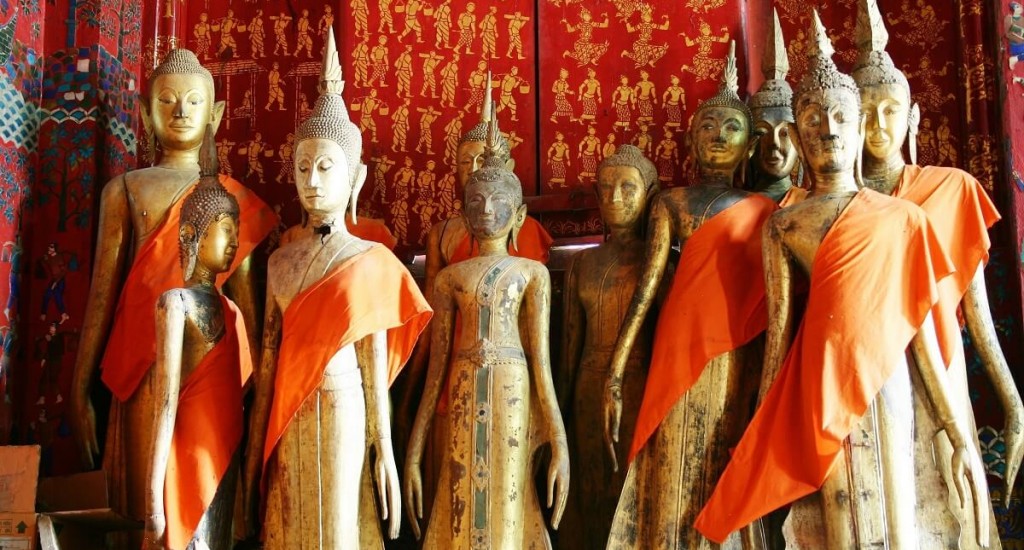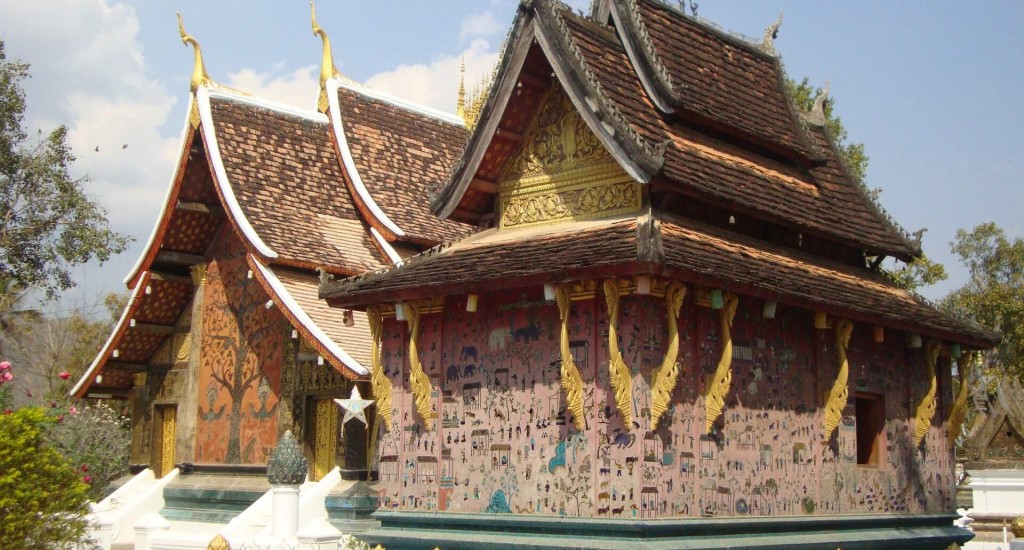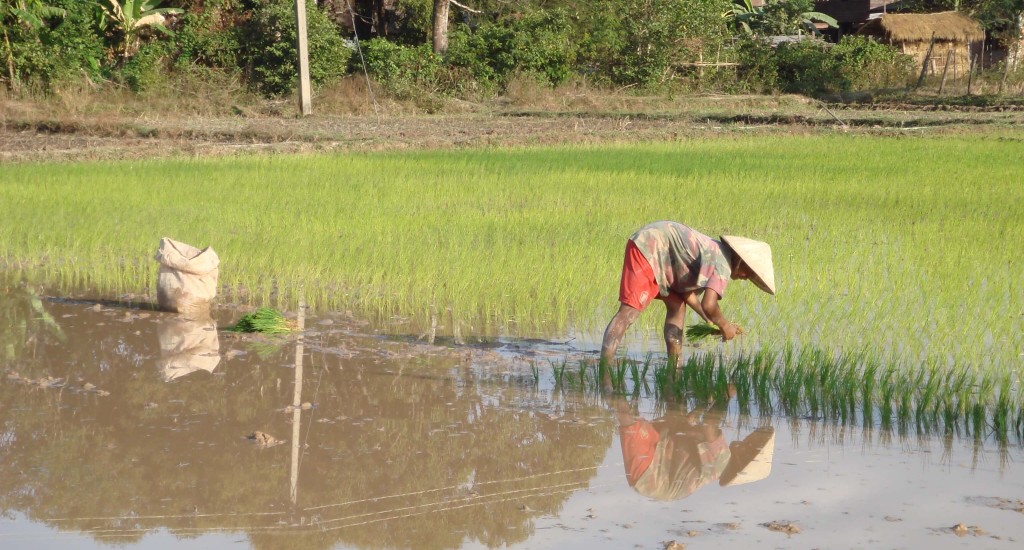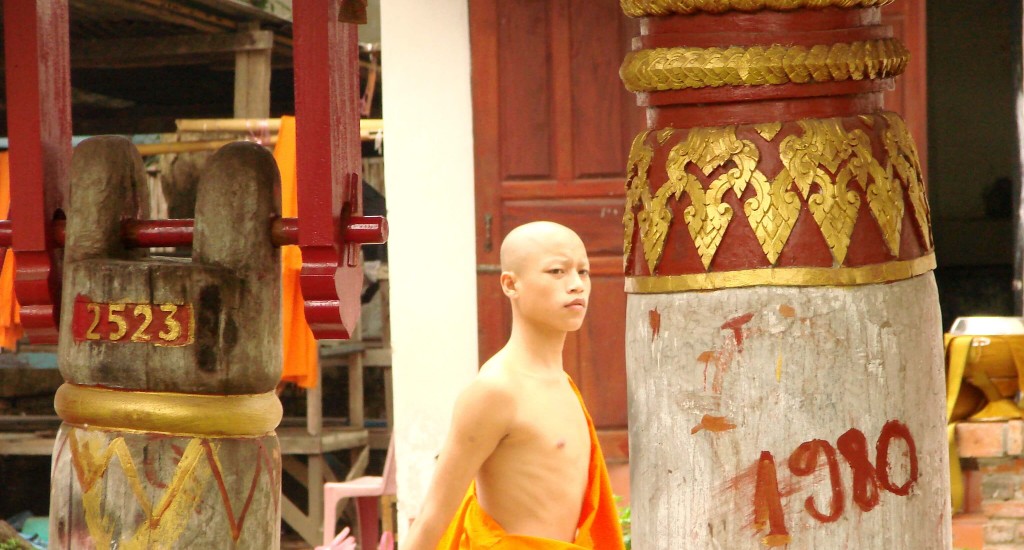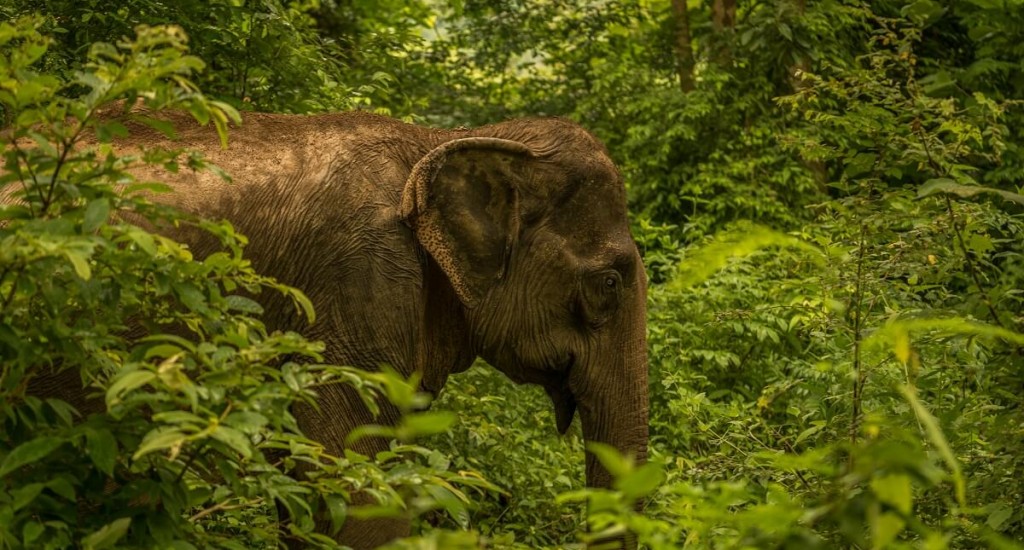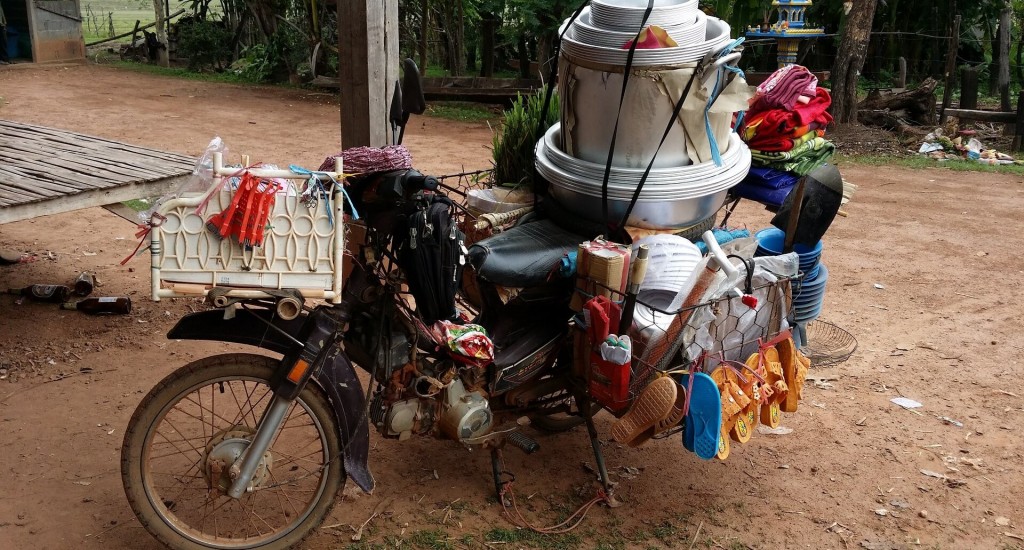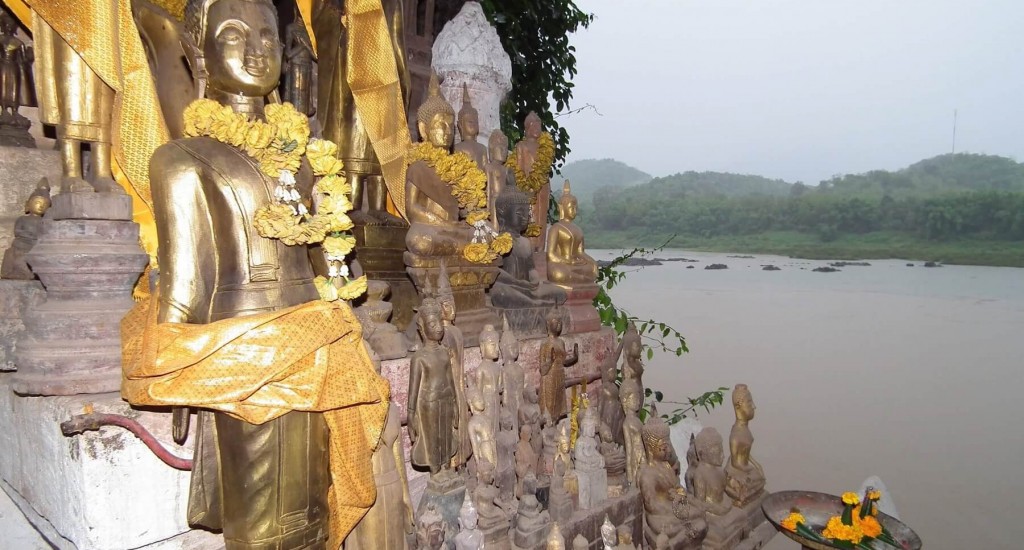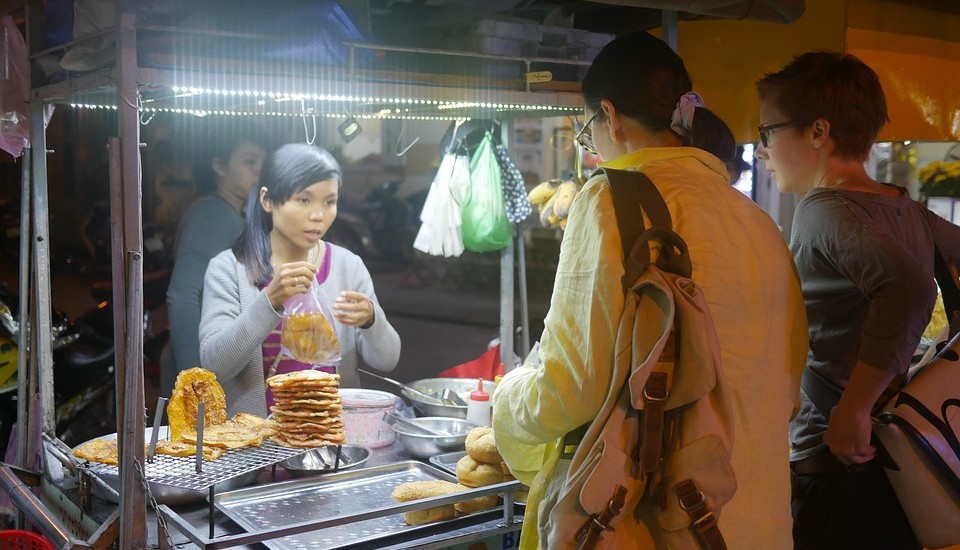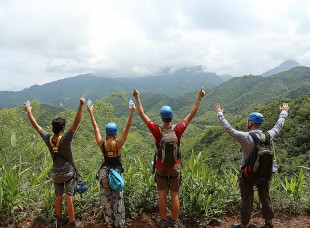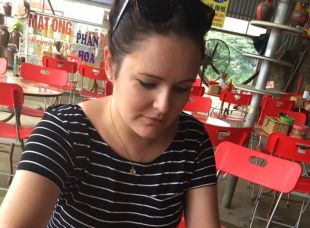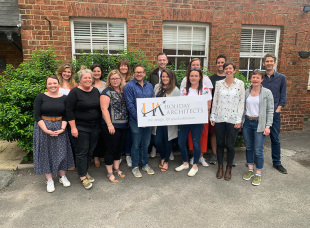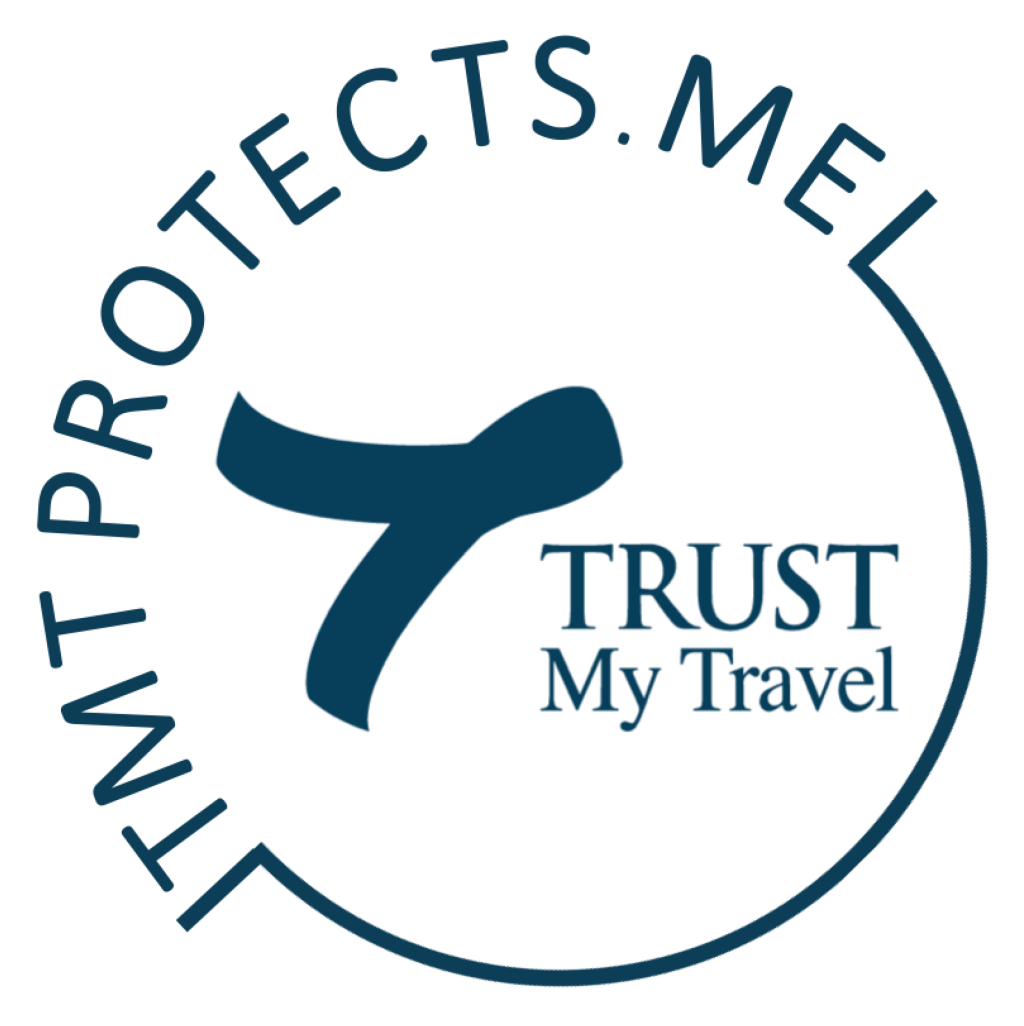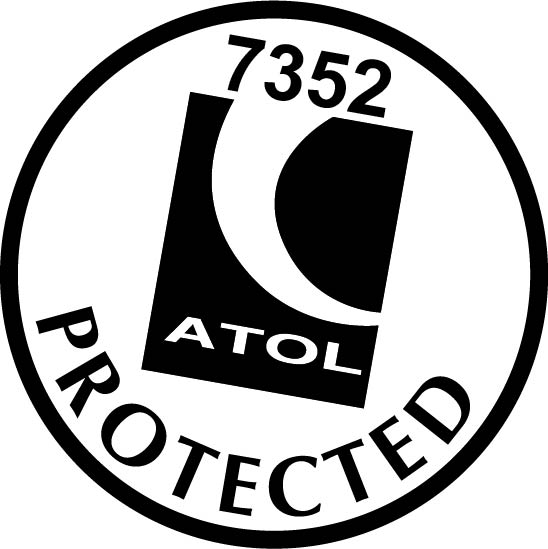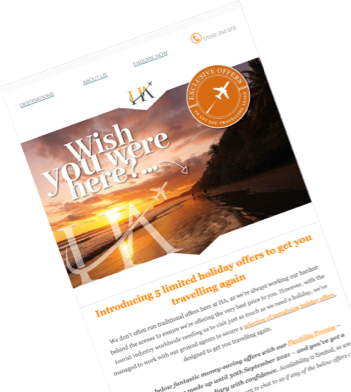Overview
Seek and you can still find a traditional, authentic and untouched South East Asia – it’s here in Laos, a land-locked and utterly alluring country. There are no frantic cities in this country rich in both natural beauty and cultural delights. The mix of stunning landscapes, gleaming temples and relaxed hosts means that Laos is emerging from the shadows to become one of Asia’s brightest stars, whereas previously it had perhaps been upstaged by its neighbours and overlooked as a holiday destination in its own right.
The focal point for most visits to Laos is the UNESCO World Heritage city of Luang Prabang – and quite rightly so. No one ever leaves under-whelmed, the more common regret being that you didn’t stay longer –more time to simply potter, meander and amble amongst the gleaming temples and crumbling French architecture. A ‘must-see’ sight for any traveller are the ribbons of orange-robed monks receiving alms at dawn in Luang Prabang.
Elsewhere Laos is a country of craggy limestone cliffs, undulating forests, mighty rivers, ancient temples, remote hill tribe villages and the warmest, friendliest people you are ever likely to meet. Serenity pervades in this land of spiritual enlightenment and constant inspiration.
Food & Drink
As with so much in Laos, it comes as no surprise that the food is closely affiliated to that of Thailand. It is, however, a lot more basic and lacks the huge variety of Thai cuisine. The basic ingredients are the same, with lots of lemon grass, coriander, basil, galangal, and, of course, the very pungent fish sauce. Like Thai food, it is often lemony and tangy, using fresh ingredients swiftly prepared.
The staple for lowland Lao is sticky rice, though many highland groups don’t eat it at all. In fact, Laos boasts more than 3,000 traditional rice varieties, with colours ranging from black and purple to red and brown. It is eaten steamed or boiled, with a wide range of meats, vegetables, poultry, and fish, all well spiced and flavoured. Lao cooking uses an astounding array of flavourings including garlic, chilies, tamarind, sugar, lime juice, and fermented fish sauce. Fresh salads, native sausages, and noodles are other common ingredients. Most food is dry and spicy, and often watered down with fruit juices, beer, or plain water. Grilling, boiling, stewing, and steaming all come into play in a Lao kitchen. Stir-frying is now also very common, but actually considered to be a Chinese influence. Stews are often green because of the many fresh vegetables used. Soups you will encounter include tom cheut, keng, and keng soua. Keng is characterized by ginger and padek, and keng soua is keng that contains both galangal and ginger. Tom cheut is a mild soup with tofu and no spices.
Water in restaurants is safe to drink since it is purified. Apart from that, stick with bottled water. There are also the usual soft, sweet fizzy drinks available. Then there is Beer Lao…..the best beer in Asia. It has achieved high international status and is now widely exported. It’s hip, it’s fashionable, and it’s popular -Laos is a country that is justifiably very proud of its national beer.
When to Travel
Laos has three seasons – the dry season, the early wet season & the late wet season:
Late October through to April is the ‘dry season’, considered by many as the best time to travel – the weather is warm, but with cool nights. Temperatures begin to really rise towards the end of the dry season – the late-March to June period usually being the hottest of the year, with high humidity and temperatures in excess of 35°C not uncommon.
The rains usually break sometime in May or June and this ‘early wet season’, usually lasting through to late July, remains hot…..but the rainfall is often short lived.
September takes you in to the ‘late wet season’ and tropical downpours are a distinct possibility on most days through to end-October. Rain tends to be more constant and heavy in southern parts of the country during this period, whereas further north (Luang Prabang), rainfall tends to be lighter and you can often expect rain only during the night or mornings, with relatively clear afternoons.
Across Laos, throughout much of the late rainy season, daytime temperatures average around 29°C in the lowlands and 23°C in the mountain valleys.
The range of topography and latitude creates some notable differences. The mountainous northern and north-eastern provinces are noticeably cooler through-out the year, particularly when the rest of the country swelters in April/May. Throughout the country in all but the hottest months of the year it is often advisable to have a jumper or fleece for the evenings, when there is a tendency for it to get quite cool.
So, when is the best time to travel? Despite having a distinct and pro-longed ‘wet’ season, you can travel in Laos all-year-round. Perhaps avoid the south during September & October, but these are the only dates/regions to embargo. High season for tourism, and all that this entails, is from November through to March and the month of August. Hotels in Luang Prabang tend to run at full capacity over these months.
Practicalities
Flights
Bangkok is the main hub for journeys in to Laos. Therefore, get yourself to Bangkok and then its then possible to fly directly to Luang Prabang or Vientiane or several border towns in Thailand, from which you can cross by land in to Laos. We price up our flights on a case-by-case basis, making sure we use the best available deals for your trip. If you have any particular preferences for airlines or routes, or are considering upgrading your flights, please let us know so we can include this in your proposal.
Visas
Due to the current Coronavirus outbreak across the world, please note that entry requirements may have changed.
For all updates please check the latest FCO Travel Advice here: https://www.gov.uk/foreign-travel-advice/laos
Safety
Laos is an exceptionally safe country. However, the usual precautions regarding valuables should be taken – keep large amounts of money out of sight and consider using a money belt; in your hotel room keep your valuables locked in the room safe and when out and about keep an eye on your bag and other personal effects. Most areas are safe to walk along at night but as always it is best to be with another person.
Driving
On your travels we will, no doubt, be using both drivers and guides. Drivers are likely to be shy and happy keep in the background. Their vehicle is their focus and they like to stay with it at all times. More often than not the drivers English language ability will be minimal and, consequently, he will be rather nervous when asked questions. He is a professional driver, with the registration and training which this requires. We only use experienced drivers, professionally certified, who can demonstrably moderate their driving to meet with our expectations. Remember, you are in charge. If you feel your driver is driving too quickly, is too reckless or is behaving in any way which you feel puts you in danger, you must say something to your guide immediately. If the driving does not immediately improve, we will secure a different driver for you. Self-driving is not an option in Laos.
Health
As we’re not medical experts we feel it is essential you contact your G.P. regarding vaccinations and the like for travel to Laos.
We also like these guys but again you must talk to your GP first: The Travel Doctor, an interactive website providing specialist health information for travellers plus customised lists of travel medicines, vaccines and malaria tablets for holiday makers, global adventure travellers and expeditions.
Money & tipping
Money & Tipping:We recommend using a debit card to withdraw cash from ATMs in either Vientiane, Luang Prabang or from money-changers at the land-border (Huay Xai, Pakse…etc), which is then backed up by a float of US dollars cash brought from home.
Currency. The national currency of Laos is the Kip and this is the predominant currency in use throughout the country. USD may be accepted in Luang Prabang, but this is not as common as it is in Cambodia or even Vietnam – you need Kip in your pocket.
Credit Cards. Laos is still predominantly a cash society – the majority of shops and restaurants, with the exception of some tourist-orientated places in Luang Prabang & Vientiane, do not accept debit or credit cards.
Changing cash. Banks, hotels and jewellery shops all offer currency exchange at a comparable and competitive rate. In general terms the USD is the most widely and easily exchanged currency in Laos, as it is in the majority of Asia.
ATMs. ATMs dispensing Kip are now available in Laos on the major centres of Luang Prabang, Pakse and Vientiane. Withdrawal charges may be quite high, but this is reliable and a largely secure method of obtaining cash. If visiting more remote areas of the country please ensure you have sufficient cash with you to cover necessary expenses.
Expenses. Laos is cheap, although the upmarket hotels in Luang Prabang may suggest otherwise. Taxis, tuk-tuks, street food, café’s, bars and souvenir shops are generally very reasonable – but always check with your guide to see what he/she suggests is reasonable. A certain amount of negotiation is often required to get the best rate – haggling is part of the fun, but don’t allow yourself to get too carried away over the equivalent of 20 pence!
Tipping. Tips are expected for your guide & driver. We would advise circa $15 per day for a guide and perhaps half that for a driver. As they always are, tips are discretionary.
Travellers Code of Conduct
- We provide all of our clients with a “Travel Facts” document upon confirmation of your booking. This details useful facts and travel advice for your chosen destination, including restaurant recommendations, reading tips, basic language, cultural traditions, climate information and brief historical overviews. We feel that this offers a useful insight into the country you are visiting, and can help you interact with local residents in a more sensitive, well informed manner. Please try to take the time to read this information before your visit, if at all possible.
– A number of the countries in which we operate holidays are religious societies with a widely observed set of customs. Always respect these norms, particularly when visiting religious buildings.
– To the best of our knowledge, all of the hotels, lodges and camps within our portfolio operate stringent measures to minimise water usage. All of our destinations have issues with water supplies to a certain extent so feel free to raise any possible wastage should you encounter it during your stays, either with the accommodation or with us upon your return.
– Please ask before taking photographs of people, and respect their wishes should an individual not be happy to be photographed. We find that friendly requests and a smile are usually met with assent.
– Strive where possible to make your own contribution to environmental practices within the destination you are travelling. This might include minimising your electricity usage, avoiding smoking in protected areas, sticking to marked roads at all times while self-driving, avoiding coral while snorkelling and safely disposing of all litter (recycling where possible).
– Where possible, try to purchase from local suppliers. This includes shopping for souvenirs, eating out in restaurants and booking further excursions during your free time. In areas where haggling are an accepted part of daily life, don’t become angry or offended if you are unable to obtain what you perceive as a fair price for an item. We emphasise to local suppliers that our clients should never be taken on unsolicited shopping trips, but if this does happen, try to retain your sense of humour, provide a firm refusal to participate and tell us about this on your return. We pass on all feedback from every trip undertaken with Holiday Architects to the relevant local suppliers, who share our commitment to travelling with sensitivity.
– Please don’t remove any indigenous items from their natural habitat and attempt to bring them back as a souvenir. This particularly applies to coral, shells, plants and food in the natural world, and to cultural artefacts and antiques.
– If you are unsure about anything relating to the above, please feel free to ask our local suppliers or your Holiday Architects specialist. All of these people either live or have travelled extensively in the country you are visiting and will be more than happy to offer their considered advice.


